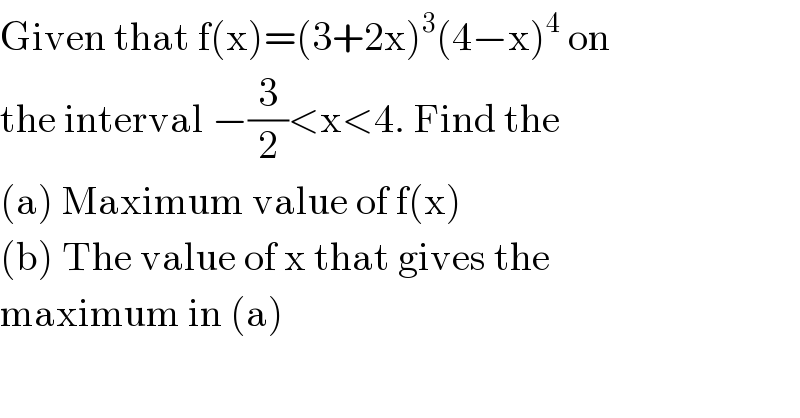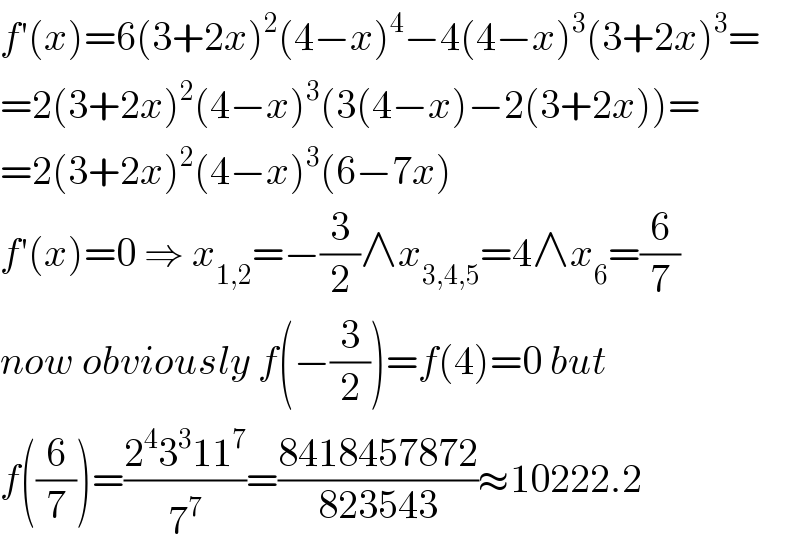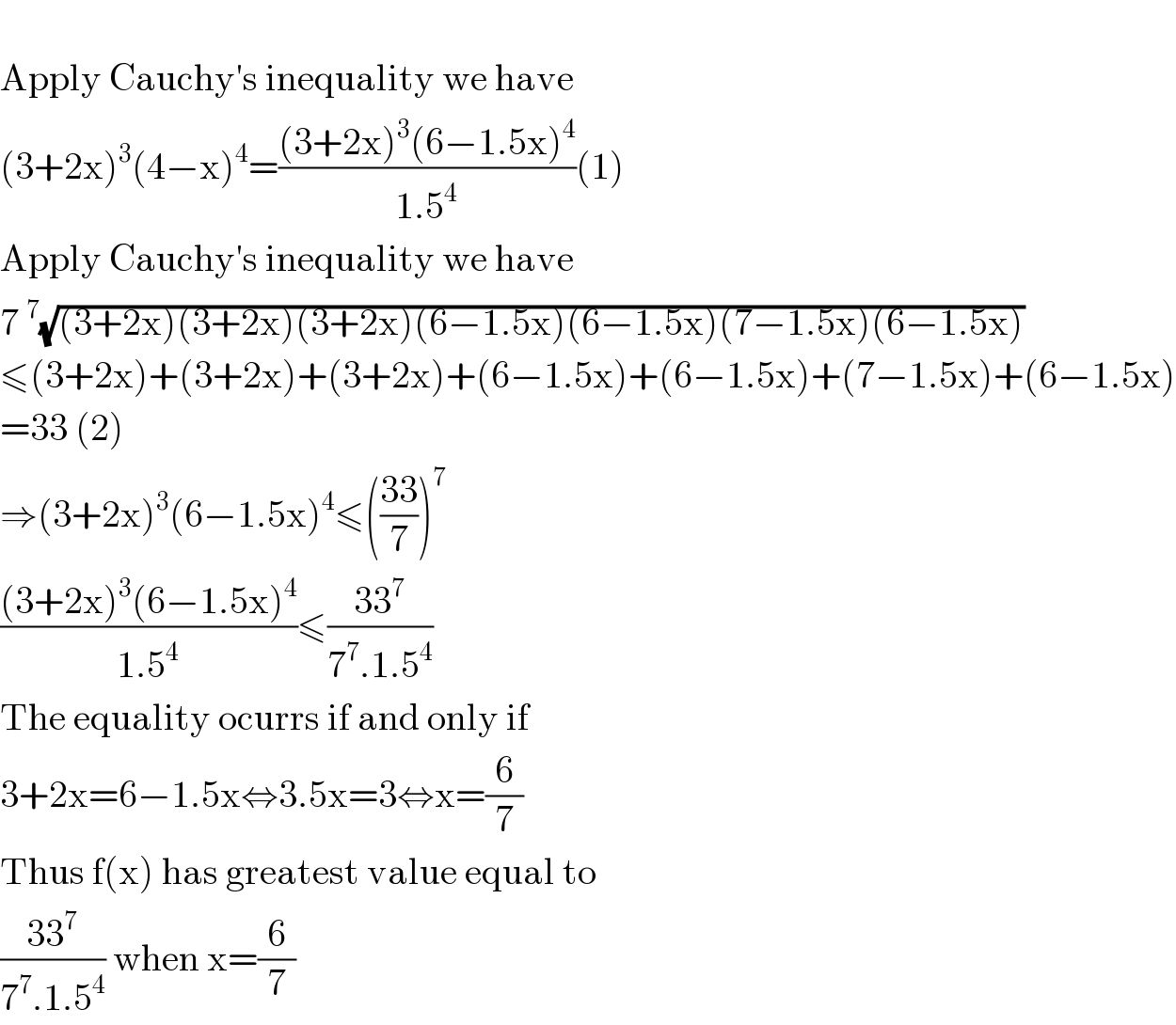
Question and Answers Forum
Previous in Relation and Functions Next in Relation and Functions
Question Number 110669 by Aina Samuel Temidayo last updated on 30/Aug/20

Commented byHer_Majesty last updated on 30/Aug/20

Commented byAina Samuel Temidayo last updated on 30/Aug/20

Answered by Her_Majesty last updated on 30/Aug/20

Answered by 1549442205PVT last updated on 30/Aug/20

Commented byAina Samuel Temidayo last updated on 30/Aug/20

